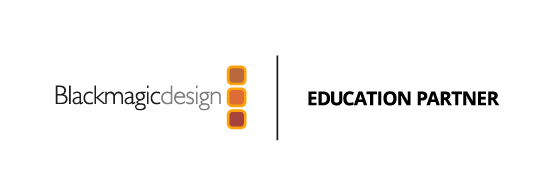| Week |
Subject |
Related Preparation |
| 1) |
Introduction to moving images.
Historical development of film editing.
"Lev Kuleshov Experiment".
"The Great Train Robbery".
D.W. Griffith ve Sergei Eisenstein.
Historical development of film editing technology: Moviola-Flatbad, Tape to Tape, Non Linear Editing. |
Film Kurgusu: Tarihi, Kuramı ve Tekniği, Cem Yıldırım. |
| 2) |
Introduction to OSX operating system.
Resolutions and Frame rates.
Introduction to the DaVinci Resolve interface.
Importing raw footage: Media Pool and Media Page.
Main Panels and monitors.
Timeline Settings.
Playhead and Timecode.
Sellection (In-Out).
Overwrite Edit (3 point edit).
Rough Cut of the 1. exercise project. |
The Beginner’s Guide to DaVinci Resolve 18.
The Editor’s Guide to DaVinci Resolve 18. |
| 3) |
Append Edit.
Razor Blade (Add edit).
Delete – (Ripple Delete).
Insert Edit.
Copy- Paste - Paste insert.
Analytical Editing and Continuity 1: Editing a scene with shots from different angles and scales. |
The Beginner’s Guide to DaVinci Resolve 18.
The Editor’s Guide to DaVinci Resolve 18. |
| 4) |
Trim mode: Roll, Ripple.
Analytical Editing and Continuity 2: Editing a scene with shots taken from different angles and scales.
1. Final editing, revisions and evaluation of the 1. exercise project.
Exporting a finished project.
Quick Export. |
The Editor’s Guide to DaVinci Resolve 18. |
| 5) |
Shot size and angles.
Dialogue scene “rough” cut.
Match Frame.
|
The Editor’s Guide to DaVinci Resolve 18. |
| 6) |
Split Edit (L-CUT and J Cut).
Reaction shots.
Dialogue scene “final” editing (Using the “Trim” and “L Cut” techniques to make the final cut of a dialogue scene.)
Using room tone. |
The Editor’s Guide to DaVinci Resolve 18. |
| 7) |
Dialogue scene final cut, revisions and evaluation. |
The Editor’s Guide to DaVinci Resolve 18. |
| 8) |
Midterm exam. |
|
| 9) |
Filmic Time and Space.
Match Cut, Jump Cut, Plan Sequence, Cross Cutting, Montage Sequence, Ellipse. |
Film Kurgusu: Tarihi, Kuramı ve Tekniği, Cem Yıldırım. |
| 10) |
Transitions.
Filters and Effects.
Render CACHE.
Speed: Speed Ramp, Slow motion, Freeze Frame. |
The Editor’s Guide to DaVinci Resolve 18.
The Beginner’s Guide to DaVinci Resolve 18.
|
| 11) |
Using Text in Video.
Introduction to Documentary Project.
Interview and B-Roll. |
The Editor’s Guide to DaVinci Resolve 18.
The Beginner’s Guide to DaVinci Resolve 18.
|
| 12) |
Documentary Project rough cut.
|
The Editor’s Guide to DaVinci Resolve 18.
The Beginner’s Guide to DaVinci Resolve 18.
|
| 13) |
Adding B-Roll and Hiding Jump Cuts, Smooth Cut Effect.
Audio Volume Levels and Audio Transitions.
Normalizing Audio.
Adding music to the timeline and basic audio ducking and mixing. |
The Editor’s Guide to DaVinci Resolve 18.
The Beginner’s Guide to DaVinci Resolve 18.
|
| 14) |
Documentary Project Final Cut and Evaluations.
Completion of Controls and Revisions. |
The Editor’s Guide to DaVinci Resolve 18. |
| Course Notes / Textbooks: |
1. Film Kurgusu: Tarihi, Kuramı ve Tekniği, Cem Yıldırım, Urzeni Yayınları, 2019
2. The Beginner’s Guide to DaVinci Resolve 18, Chris Roberts and Simon Hall, Blackmagic Design Pty Ltd, 2023.
3. The Editor’s Guide to DaVinci Resolve 18, Chris Roberts, Blackmagic Design Pty Ltd, 2023. |
| References: |
1. Film Kurgusu: Tarihi, Kuramı ve Tekniği, Cem Yıldırım, Urzeni Yayınları, 2019
2. The Beginner’s Guide to DaVinci Resolve 18, Chris Roberts and Simon Hall, Blackmagic Design Pty Ltd, 2023.
3. The Editor’s Guide to DaVinci Resolve 18, Chris Roberts, Blackmagic Design Pty Ltd, 2023. |

 İSTANBUL TOPKAPI UNIVERSITY BİLGİ PAKETİ / DERS KATALOĞU
İSTANBUL TOPKAPI UNIVERSITY BİLGİ PAKETİ / DERS KATALOĞU


